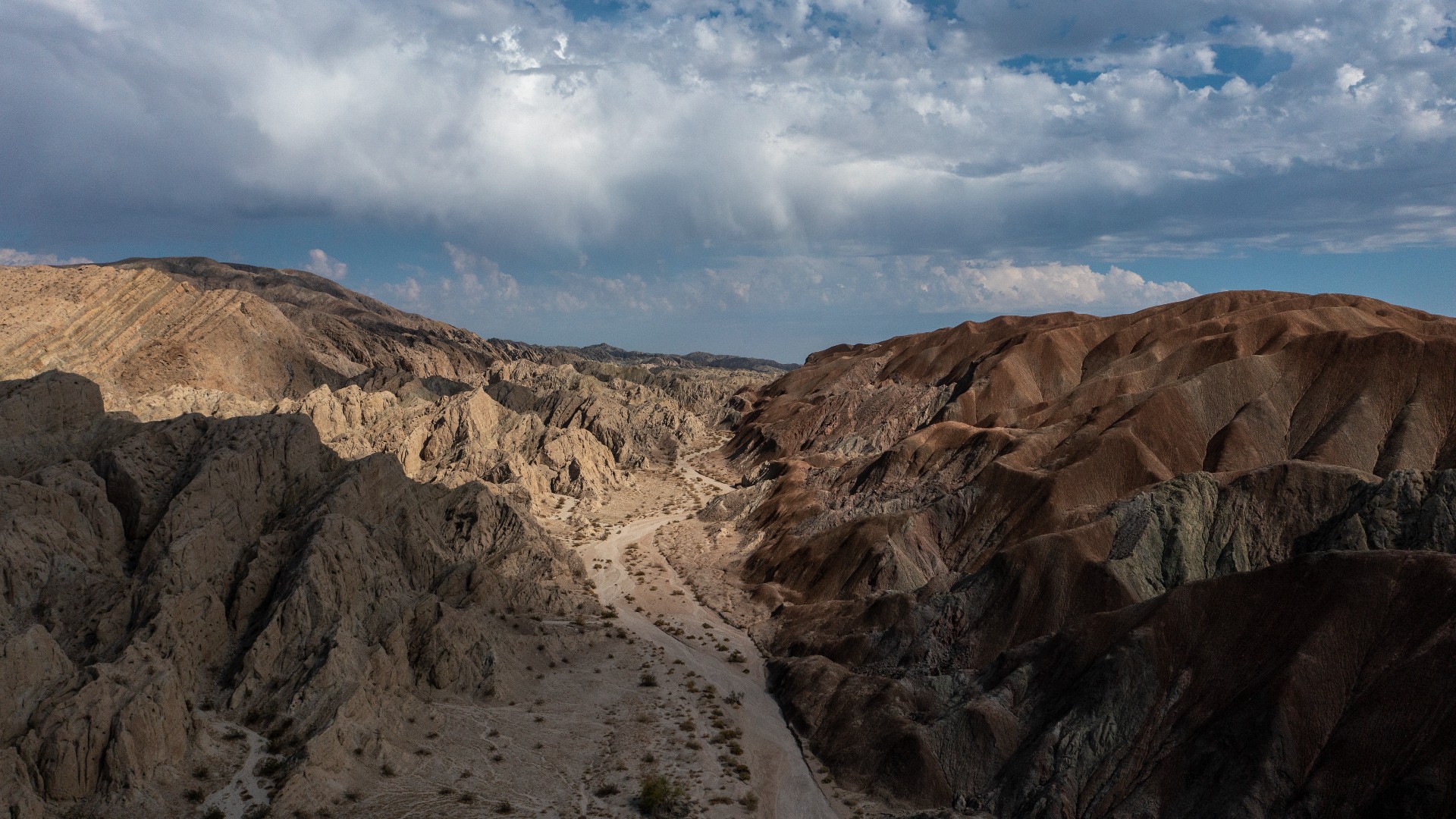San Andreas Fault's creeping section could unleash large earthquakes
The central section of the San Andreas Fault could host larger quakes than previously realized.

The middle section of the San Andreas Fault may have the capacity to host larger earthquakes than previously believed.
Between the towns of Parkfield and Hollister, the famous California fault undergoes something called aseismic creep. Instead of building up strain and then slipping in one earth-rattling moment, the two sections of fault move imperceptibly, releasing stress without causing large quakes. But looking back millions of years in time, researchers have found that this section of fault may have experienced earthquakes of magnitude 7 and higher. That is larger than the magnitude-6.9 Loma Prieta temblor that killed 63 people in the Bay Area in 1989.
It's not fully clear how long ago the large quakes on the fault occurred, but they were within the last 3 million years, said Genevieve Coffey, an earthquake geologist at GNS Science in New Zealand.
"The central section should be considered as a potential source of earthquake hazard," Coffey told Live Science.
The San Andreas Fault
The San Andreas Fault has three sections. The southern section runs from the Salton Sea to Parkfield, California, and has the capacity for large quakes. In 1857, for example, the magnitude-7.9 Fort Tejon quake shifted the ground at the fault a whopping 29.5 feet (9 meters). The northern section of the fault runs from the town of Hollister, through the Bay Area up to Cape Mendocino, California. This section of the fault is most famous for the great 1906 San Francisco earthquake, which had an estimated magnitude of 7.9.
Related: See stunning photos of the San Andreas Fault
In between Parkfield and Hollister, though, the fault hasn't given rise to any recorded quakes larger than a magnitude 6. Geoscientists have dug into the fault, looking for signs in the shape of the sediment layers of long-ago earthquakes, and they haven't found any large quakes in the last 2,000 years.
Sign up for the Live Science daily newsletter now
Get the world’s most fascinating discoveries delivered straight to your inbox.
But even if the central San Andreas doesn't build up enough stress to start a large earthquake, it could act as a conduit for quakes originating on the northern or southern section of the fault, Coffey said. She and her colleagues wanted to go back more than 2,000 years.
To do so, the researchers took advantage of the fact that when a fault slips, it generates friction, which generates heat.
"It's like rubbing your hands together," Coffey said.
This heat can spike the temperature of the rocks in the fault by more than 1,800 degrees Fahrenheit (1,000 degrees Celsius). And those temperature changes can change the structure of organic molecules that accumulate within sediments.
Historical quakes
The researchers analyzed a sediment core from the central San Andreas that was drilled as part of the San Andreas Fault Observatory at Depth (SAFOD) project. Deep in the core, about 1.9 miles down (3,192 to 3,196 meters), the researchers found a spot where the biomarkers showed signs of heating.
"That patch of the fault also consisted of these really highly deformed siltstones, mudstones," Coffey said. "It had lots of these small slip layers, so lots of scaley surfaces and shiny surfaces, which is what we would think of as rocks that had hosted lots of earthquakes."
This zone of the fault may have hosted more than 100 quakes, Coffey and her colleagues reported Feb. 25 in the journal Geology.
Next, the researchers analyzed the quake-deformed section of rock with a method called potassium-argon dating. This method takes advantage of the fact that a naturally radioactive variation of potassium, potassium-40, slowly decays into argon gas. When something happens to heat the rock, this gas is released, resetting the "potassium-argon clock" to zero. By looking at the accumulation of argon, the researchers could determine how long it had been since the rocks were heated.
Their results suggested that the heating happened, at the earliest, 3 million years ago. But the quakes could have been far more recent, Coffey said. Part of the ongoing work done by Coffey's collaborators involves improving the potassium-argon method for earthquake dating to narrow down that time span. However, the magnitude of the heating indicates that the central San Andreas can indeed undergo a lot of shaking — it's likely that the earthquakes recorded in this section of the fault ranged from magnitudes in the mid-6s to low-7s, Coffey said.
"The work that we did was the first direct geologic evidence of earthquakes" in this region of the San Andreas, she said.
The quakes probably started on the southern portion of the fault and sped along the faultline like an unzipping zipper. Knowing that the fault has this capacity is important for understanding the earthquake hazard in central California, Coffey said.
The researchers plan to apply the potassium-argon method to other faults, including in the New Zealand bedrock, where there isn't any organic material for traditional carbon-14 dating (which only works back to about 55,000 years) and where there are no sedimentary layers to show the marks of very old quakes.
"The potassium-argon tool is pretty interesting, because it really gives us access to a range of faults that we haven't been able to date in the past," Coffey said.
Originally published on Live Science.

Stephanie Pappas is a contributing writer for Live Science, covering topics ranging from geoscience to archaeology to the human brain and behavior. She was previously a senior writer for Live Science but is now a freelancer based in Denver, Colorado, and regularly contributes to Scientific American and The Monitor, the monthly magazine of the American Psychological Association. Stephanie received a bachelor's degree in psychology from the University of South Carolina and a graduate certificate in science communication from the University of California, Santa Cruz.









